(first posted 11/2/2012) Recently, I attended what is, in all likelihood, the last car show of the season. True to form, I took several dozen photos and will be meting them out in the next few months. Today, let’s look at one of my favorite marques: Imperial. And that’s an Imperial, buster! It is not, I repeat, NOT, a Chrysler. To understand why it bugs Imperial connoisseurs when someone calls one of these majestic luxury cars a Chrysler, imagine how weird it would sound for someone to call your Eldo a “GM Cadillac” or your Mark III a “Ford Lincoln.” OK, got it? Good. Let’s move on to the star attraction: This ’67 Crown Coupe.
The 1967 Imperial was all-new. It was also the first model to share the Chrysler’s monocoque chassis. And no doubt to Paul’s relief, the circa-1957 wraparound windshield was, at long last, consigned to the dustbin. It was a handsome car, though it was clear that it was not as unique as it had been in prior years. It all came down to dollars and cents: The Imperial had been stalling in the luxury car sales race, and Chrysler was getting tired of putting so much money and effort into a special car that typically sold 15-18,000 units–if they were lucky. It had been a long time since the Imperial’s last big sales year, 1957, when 35,734 units found buyers. In fact, ’57 was the high-water mark for the classy but unsuccessful Imperial marque, which finally fizzled after the ’75 model year.
That said, the ’67 Imperial was still very handsome and luxurious–and so were the competing Cadillac and Lincoln Continental. Could 1967 have been the pinnacle of the big, blowsy American luxury car? If not the best year, it’s certainly in the top three.
There’s no denying that the Imperial was sumptuous, with its plush seating, Danish-modern instrument panel with full instrumentation (sans tach), and an intriguing new option–the Mobile Director. Though rarely ordered, this neat option, available only on the Crown Coupe, comprised a front passenger seat that swiveled 180 degrees and a three-position folding table–the perfect setup for dictating a letter to your comely secretary while sipping a martini as you’re being whisked to an important meeting on the brand-spanking-new Interstate. Alas, this unique option was infrequently ordered (its $597.40 price tag on a $6,000 car might have had something to do with that), and Mobile Director Crown Coupes are prized by collectors today.
Our featured Imperial does not have the Mobile Director option, but nonetheless is quite lush with its blue leather seating. This has to be one of the sleekest instrument panels of the late ’60s. I especially like how the ends “waterfall” down into the power window controls on the door panel. And no, that is not a radio blanking plate; it is hinged and conceals the radio when it’s not in use, all in the name of aesthetics. And what’s that below the dash?
Yes, it is a vintage mobile phone. These had to be scarce in the ’60s and early ’70s. I wonder if jpcavanaugh’s dad’s Mark IV had the same model? Perfect for Maxwell Smart to phone the Chief when his shoe phone was busted! At any rate, there’s no antenna so it’s likely there for looks alone.
Even the door panels are luxurious. Look at all the buttons and controls. Maybe one of them launches the Saturn IB rocket! Each door had a built-in glove compartment, carpeted lower panel and courtesy light.
Befitting an Imperial, there was much standard equipment, including power front disc brakes, power steering, power windows, fender skirts, and several yards of chrome and polished stainless steel trim.
All Imperials received a four-barrel 440 cu in V8 that produced 350 horsepower at 4,400 rpm. Naturally, it was backed by Chrysler’s excellent Torqueflite automatic transmission. The Crown Coupe cost a princely $6,011 before options; adding the most popular options was likely to bump up the tally by a grand or two. Any 1967 Imperial is rare–only 17,614 were built–but the Crown Coupe take rate was even less, with only 3,235 made. Only the Crown four-door hardtop beat it in the lineup, with 9,415 built.
Our blue CC is a local car, and unrestored to boot. It was sold brand-new at Learner’s Sales & Service, right here in Rock Island. Although Learner’s was bought out by a Moline, IL C-P dealer in the late ’90s, this car still stands as a testament to just how good Chrysler made the Imperial back then. Too bad most folks wanted Cadillacs.














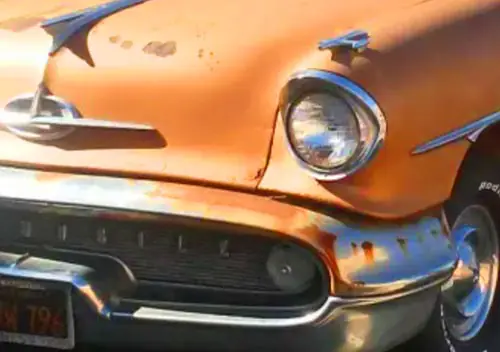
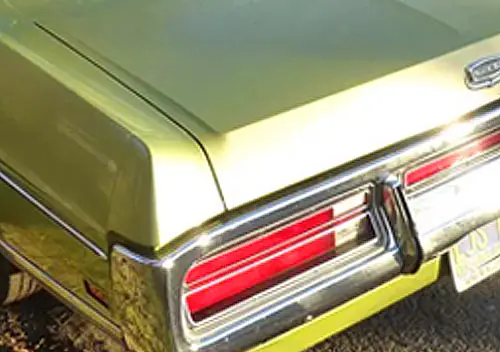
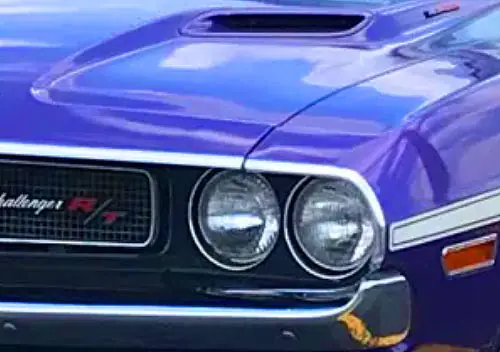


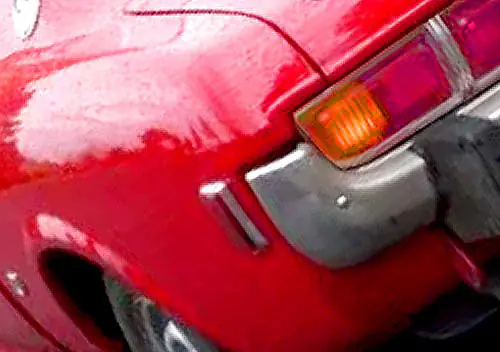
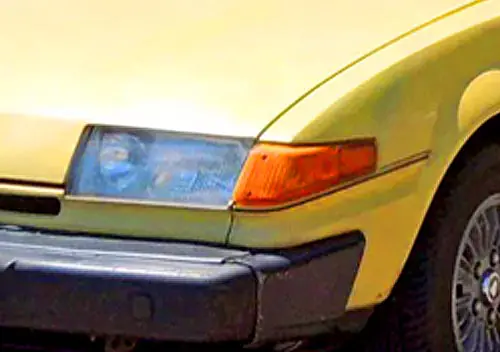

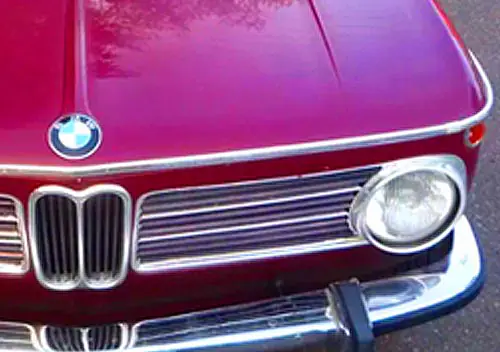
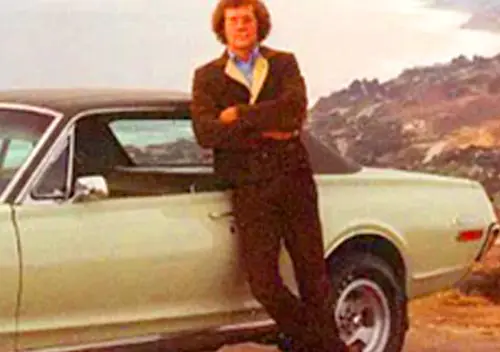

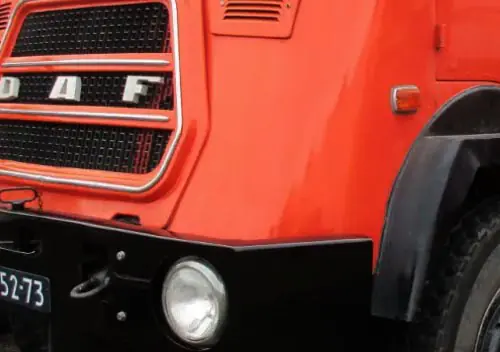
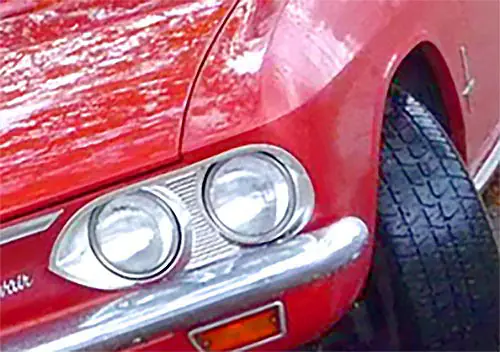
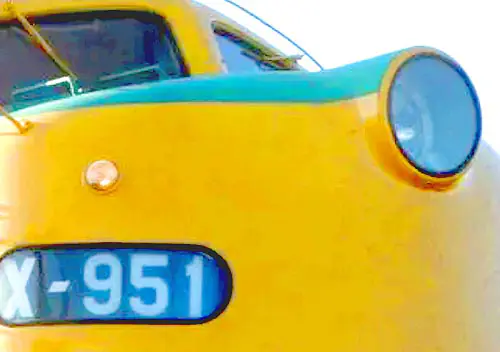
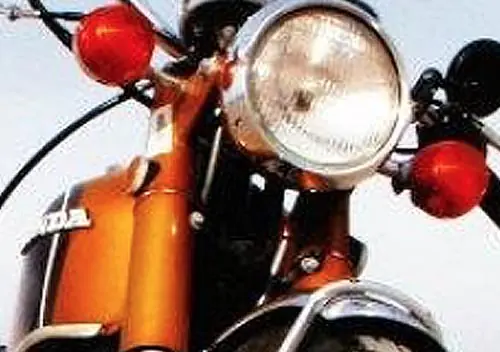
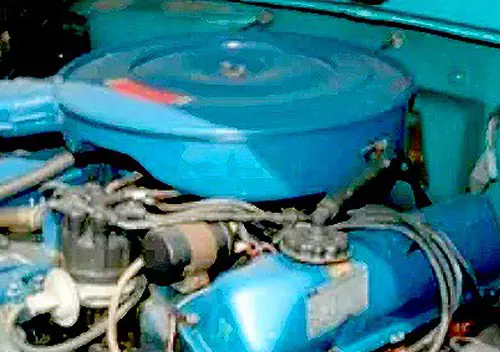

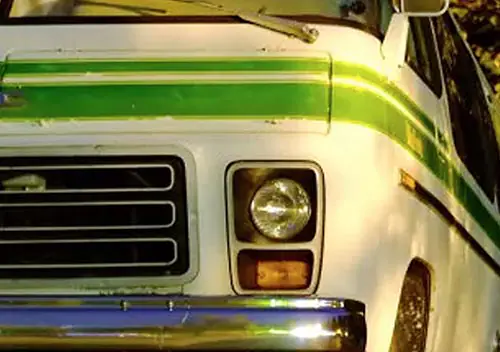

Hmm. I hate to question you on this, Tom, but are you sure it’s not a 1968?
The small square sidemarker lamps were not present on the 1967 version. Of course, it’s possible that someone swapped out quarter panels with a 1968 model, or they were offered as an option in 1967.
1968 was the year that all cars had to show sidemarker lamps or reflectors.
ETA: Googling, you’re right. The front grille is a 1967. But the sidemarkers are definitely 1968. My supposition about body repair using a 1968 donor car is probably what happened.
Great article. I have always liked these land yachts. My first trip away from home without parents at age 16 was with my best friend Tom in his dad’s Imperial. Like sitting in your living room couch.
It’s a ’67. The ’68 had the side markers in the bumper. The owner must have added ’68-style side markers at some point.
Here’s a ’68:
> ETA: Googling, you’re right. The front grille is a 1967. But the sidemarkers are definitely 1968. My supposition about body repair using a 1968 donor car is probably what happened.
I doubt it. The original owner probably had them added to “update” the car so most people such as yourself would think it was a ’68 model. They are very easy to add. The bezel is square, but the body of the marker light fits in a round hole, so only a hole-saw is required to retrofit them into the sheetmetal of the car.
The ‘68 fenders would not have worked on the ‘67 without changing the grille and bumper too.
What a handsome car! I do like the 68 a little more. I understand the 67 and 68 Imperial’s drive great.
Yes, it’s as much a Chrysler as my Lexus is a Toyota, and there is nothing wrong with that.
Why do you, a Toyota owner, imagine you should get a vote? How often do people even refer to your rice burner as a Toyota, anyway?
I will never understand people who derive pride from stubborn ignorance.
Lots of Chryco products on the Beverly Hillbillies. Mr. Drysdale had either a Chrysler, or more likely, an Imperial. Ms. Hathaway had a Dodge convertible. Lots of driveway scenes on that show=lots of Chryslers. That’s actually all I know about these cars, as I don’t remember seeing them very often as a kid.
I love that show, I Still find it funny. I Have always enjoyed the rare ChyCo Products featured within.
Esp. when Meeting Mrs. Drysdale, who was whisked away in her 62 imperial ghia after granny’s reaction to her supposed over indulging -whisked off for proper treatment!
I like the 427 Police Interceptor unmarked that Joe Friday drove on Dragnet.
It gets a lot of camera time too. And it looks so cool sitting up on that Police Interceptor suspension.
MPG City? Highway? I am guessing terrible.
Who cares about the MPG??? Freight train torque that is “RIGHT NOW” and quick shifting TorqueFlite . . . Imperials were big, VERY FAST, comfortable cruisers. If you wanted fuel economy, you could’ve bought a Toyota Corona or Rambler American in the day.
I got 11 to 14 mpg with my 1965 300L, which wasn’t hugely different from this other than weighing a tad less and having a 413 engine instead of a 440.
Let me add to the chorus of voices that say, “Who the f*&# cares?” With a proper tune up and good radial tires it might even beat some of the BOF SUVs of today, but again, it doesn’t matter. This car has more style and luxury than an entire lot filled with (insert maker here).
+1 for the title. Of course, GM subsequently DID slap “GM” badges on all Cadillacs, something that deeply troubled a non-car-person friend of mine several years ago when I pointed out in a parking lot that the same badge could be found on a Chevy Cobalt, a Pontiac Grand Prix, and a new Cadillac Escalade.
And part of the reason people had a hard time sorting out whether “Imperial” was a model name or a marque is that Chrysler sold quite a few “Chrysler Imperials” both before and after the period in which the name was registered as a separate marque, some considerably more or less upscale than others. Some of the most stately Imperials — the big CW Airflows and the 1950-54 Crown Imperials — were badged as Chryslers, so the confusion isn’t hard to understand.
As a side note, I’ve always wondered why the Mobile Director option was only offered on Crown Coupes. It seems like the sort of thing that would be more useful with four-doors, like the little picnic tables in the back of big Jaguar saloons.
The four-doors had B-pillars. When the seat swivels, the seatback goes to the outside, and would hit the B-pillar. remember, even 4-door hardtops had short B-pillars to hold the rear doors.
The b pillar between the doors did not allow the seat to swivel full circle.
It wasn’t the first time, they did it in 1967 too, though that was more covert, GM had big color foil “sticker” emblems in the door jambs of every car, from a low Chevy II to a Fleetwood limo.
Would the Imperial have a pentastar somewhere? I can’t see one in the photos.
I doubt it. The ’73 only has them on the back of the owner’s manual and a couple stickers under the hood.
Yes, they have a gold Pentastar on the fender, below the Imperial badge on the passenger side.
On the lower right front fender behind the wheel, same as my 64-56 and 66 Imperials and other Mopars of that time, some pics of my ’67
I hate to break it to you, but that’s not really a mobile phone. It’s an E. F. Johnson Messenger 130 CB radio. The 130 has a telephone handset instead of the usual speaker and hand-held mic. Back in the “10-4 good buddy” seventies, they must have thought it was cool for a CB to look like a mobile phone.
It’s definitely a cool addition to this fabulous Imperial, and if people think it’s a mobile phone, all the better. If you’d been able to take a close look at the back, you might have seen evidence of a bumper mount for one of those long CB whips.
No, I’m not a CBer (ugh). The E. F. Johnson company started as a builder of powerful and accurate ham radio transmitters, like the immortal Johnson Viking. Their logo on this radio was the tip-off.
Interesting. Thanks for enlightening us!
I have a newer model of one of those CBs. It may have looked funny, but I had it, and a giant whip antenna, installed in my VW Rabbit. I’m sure it saved me from getting a couple speeding tickets on the highway by listening to the truckers announcing where the speed traps were.
The antennae are also very useful for finding your car in the mall parking lot- although they could be a bit of a pain in the underground level. (I remember having to jump out of my parents’ ’76 Celica hatchback to bend the fiberglass whip antenna down, and then holding it until we were parked under the old Cinderella City mall in Englewood, CO.)
I had a steel whip on mine. I once came out to my car, parked in the university student parking lot, and found someone had hung a beer can on the end of the antenna.
After that I decided that I needed to draw less attention to my car to not encourage vandalism. I put a clip on the front of the rain gutter over the door and attached the tip of the antenna to it so the antenna looped over the car. I would unclip the antenna if I was going to be travelling on the highway.
Mike PDX, you beat me to it. My late Grandmother had an exact EF Johnson (which makes mobile, tactical portable radios, BTW) CB “phone” radio like that – same exact model and color – installed in 1976 in her brand new Ford Granada. That car was an oddity . . . . base four door sedan, 302 V-8 with a three speed FLOOR mounted manual tranny. It ended up getting t-boned by a drunk driver when they towed it (on the back of their motor home) down to San Antonio for the winter (1980). Drunk went through the intersection; just missed my grandfolks in the Avco (Chrysler 440 powered) motor home, but caught the Granada being towed aft . . .
Citizens Band = Children’s Band. At least that’s what us professional telecommunicators called it . . .
Yep – In the mid seventies all my high school friends and I had CBs. How else were we supposed to coordinate our party locations?
“Drop it down to the Harley. I want one of them left-handed cigarettes.” “4”
What a gorgeous car! What a restatement of what the Imperial was meant to be.
Chrysler was so weird in the early 60’s. The prior mentioned ’63 Imperial is part of that weirdness (now beautiful because it was so ugly back then?).
Lincoln came out with a beautiful design in ’61. It took a while for other manufacturers to follow that direction. Somehow, Lincoln didn’t change their design for almost an entire decade aside from coming out with a coupe version.
Honestly, the first thing I think about after reading the article is a full frontal collision where the chess pieces and Mobile-Director table become projectiles and chest-busters. Ah, the ’60’s!
I got to spend a good hour playing with those Power Window switches While My Brother in law ran errands in his father’s… Which in 69 he traded for his Final 4 Dr Fleetwood Black Over Gold… The Imperial I just remember playing with the toggle switches. Never understood why hide The Radio? Bedroom Stereos did this too. I don’t find them ugly, the cars, or radio faces.
Lincoln Continentals in the early ’60’s had cover plates for the radios too.
You may be thinking of the air-conditioning vents and controls in the ’61 Continental, which swung up into a concealed position. The radio was top center, and I don’t believe it was covered.
Drat, I was so close but didn’t guess the clue correctly on this one. I KNEW it was a 65-68 Mopar too, because I recognized the rear view mirror.
While I theoretically agree with you on the “Chrysler” vs “Imperial” distinction,
I am often forced to resort to call them as “Chrysler Imperials” because anyone under about 45 wouldnt know what you mean. Nobody has to say Ford-Lincoln or GM-Cadillac because,as history shows, they stood on thier own.
Most of my friends are non-car people and many are younger than myself,, so unless I say “Chrysler” in front of “Imperial”,
they wouldn’t have a clue.
I remember back in the ’60s Dad asking me “Who makes Toyota?”. 🙂 Never thought there could be a brand he hadn’t heard of.
When I was a kid, an elderly neighbor and his wife had 2 Imperials in the garage. A white 64 and a gold 67 with a black vinyl roof and gold leather. When the 64 got rusty, it went away and they bought a dark green 72 LeBaron. They were always purchased used. As I remarked in another thread, Imperial had the worst resale of any luxury car, and my neighbor (who was retired from working in an auto parts warehouse) could afford them after they hit about 3 or 4 years old.
Every generation of 60s Imperial speaks to me, but in a different way. I love these just as much as the car earlier today, but for its sleek, modern lines. I agree that the dash is a classic on these too. The coupes were always very rare, virtually always under 4K cars a year except for the very best sales years (1957 and 64).
And every adult I knew in the 1960s and 70s called the car a “Chrysler Imperial.” Imperial did not become a separate brand until 1955, so those folks all grew up during the time when it really was a Chrysler Imperial. Just like today, Chrysler is going to play hell trying to get people to stop saying “Dodge Ram”.
Splitting-off Imperial from Chrysler made sense. From what you’re saying, they just didn’t stick with it long enough to get “Chrysler Imperial” out of the common vernacular. Would it have helped them to sell more Imperials versus Lincoln and Cadillac if they had? I dunno.
Splitting off pickup trucks from Dodge is a dumb idea IMO. (Your analogy is a good one though.)
Another example of this mentioned in another thread recently is “Nash Rambler”.
Also, “Ford Edsel”. I wonder if that started shortly after the brand was discontinued as classified-ad shorthand for “you *can* still get parts for it”.
In the 60’s and 70’s, my grandmother still called them Chrysler Imperials. She was a gardener, and one of her hybrid rose bushes was called “Chrysler Imperial”. This certainly did nothing to discourage her from referring to the car by the wrong name.
Edit: I see that both Paul and jpcavanaugh got there first.
Don’t let Lee Marvin drive your car-
http://www.imperialclub.com/Movies/Point/index.htm
Or Joe Don Baker.
Lovely coupe. I always thought the sedans of this generation needed a couple more inches of wheelbase to look right, but somehow the coupes work better.
My Dad had one of these when I was a kid–a sedan version. With all the switches and fold-down trays, I thought it was a limousine. I remember it having plenty of electrical gremlins, but that cool dashboard and those big, cushy seats bring back some fond memories of cruising around Sarasota (a land yacht paradise) in the early 80’s. Too bad they don’t make these boats anymore. With the Town car finally gone, there’s a big hole in the comfy cruiser lineup that will probably never-again be filled.
I had a Newport, and with a 383 it got 10mpg. I took it to a shade tree mechanic who ignored the timing mark, and timed it by ear.
The gas mileage doubled to 20 mpg city driving and the responsiveness improved dramatically.
Years later, I bought a ’76 Plymouth Gran Fury wagon, for $75. It too had big fold down armrests, and rode as smoothly as the Chryslers, for $75 bucks.
I would buy this car just to stare at that instrument panel. WANT.
Did the ’67-’68 Imperial use real wood on the dash and doors? I’m pretty sure 1966 was the last year that the Cadillac (Fleetwood) did so.
By ’67 the “wood” was a vinyl applique’. The ’65 and ’66’s bragged in advertising literature that they used ‘100 year old claro walnut’ . . .
Wrong. The 67 also had Claro walnut, even my convertible. The only applique in the interior of these cars is on the backs of the front seats. The 68, however, switched to bronze panels (any place where the wood was used in the 67 instead used bronze). I prefer the wood myself, and also find the 67 to use more subtle styling; the 68 had a larger grill and less sculpted front bumpers. I also prefer the parking light/cornering light on the 67, which used a large plastic lens with the Imperial logo, as opposed to the chrome grill of the 68.
For some extra cash, you could check off an option box for the Chrysler and the Imperial with the 440 by asking for the police package. Dual exhausts and a twin snorkel air cleaner. Good for an extra 15 hp. Seldom ordered (my Grandmother’s ’69 Chrysler New Yorker had it and a school friend’s grandmother had one in her ’67 Chrysler 300 coupe). . . . even rarer in the ’67 or ’68 Imperial.
A better term for the package might have been ‘heavy duty’ or ‘security detail’. I can’t imagine too many police departments being able to justify a new Imperial in their fleet.
Of course, there might be a need to use it when chauffering the mayor around or a convertible for parade use. Back then, there wasn’t quite the scrutiny on ostentatious use of public funds like there is today.
I remember seeing one of these on a car lot – bright red with white vinyl top and white leather seats. Beautiful car in really nice shape, iirc as nice as the blue one shown here.
What a beautiful car! It makes the ’67 4-door that I posted to the cohort a while back look like an old beater by comparison– and that is saying something.
My 67 Crown Coupe, like this one has the claro walnut wood dash, not vinyl applique.
68 imperials switched to copper inserts.
Interesting that the owner/previous owner thought it necessary to add the 68 side marker lights in front. 67-68 fenders are not interchangeble
Their is a climbing rose called Chrysler Imperial. Anyone know where we can send a cease and desist order to the American Rose Society?
It dates back to 1952, when Imperials were Chryslers. This picture is from the 1954 Rose Parade.
IIRC that rose hybrid goes back to the 1940s or early 50s, and is a rich, beautiful dark red. I used to have some of them in my yard at my previous house. Update – Wiki says 1952. It also adds that in the 1954 Tournament of Roses parade in Pasadena, a float entered by Detroit and the Chrysler Corporation used 25,000 of this variety.
Edit – oops, PN got here first.
To me, nothing was as stunningly stately as the 64-66 generation, but this one comes close.
I have a few questions about the Barbed Wire fence around Dahl Ford.
I love the Imp but being a child of “Malaise” I’d like to know more about the Nova in the shadows..
It was featured in one of my Cruise-In Classics: https://www.curbsideclassic.com/blog/cruise-i-classic-mainlines-monzas-and-more-in-moline/
Flipping beautiful.
“To understand why it bugs Imperial connoisseurs when someone calls one of these majestic luxury cars a Chrysler, imagine how weird it would sound for someone to call your Eldo a “GM Cadillac” or your Mark III a “Ford Lincoln.””
It’s not the same. Cadillac and Lincoln were always stand-alone marques. Now, if “Cutlass” had ever been spun off into a standalone brand…
A more apt comparison is Ford’s short-lived Continental which was spun off at the same time as Imperial, in 1955. Or the 1956-only Clipper. Or the Rambler. Or Ram today; I just can’t bring myself not to call it a Dodge.
Another peculiarity is when a car starts off as a separate marque. Like Valiant or Comet. The name of the brand that absorbed them is usually retroactively applied. Then there’s the Capri, which was never officially called a Mercury until 1979, it was always “Imported for Lincoln-Mercury” or whatever.
Yes, but they were a separate marque for 20 years, a not inconsiderable period of time and unlike the Valiant (1960 only) or Continental (1956-57).
I know that to some the 64-66 years was the pinnacle of design for Imperials ,but try as I might I just can’t get over what was basically a1960 windshield on these cars. To me It just doesn’t fit.
I also have to add that the Minnesota title for my 67 imperial says “Chrysler Imperial” , though nowhere on the title for my 1960 Imperial can you find the word Chrysler…
Ha, ha…the Illinois title on my 67 Convertible does not have Chrysler anywhere on it.
By the way, I also like the 66, as it has the 440 for the first time, also uses walnut for the trim, but retains the Engel appearance (like a Lincoln, only better). I like the split grill on the 64, but the rest is just not quite there, and the 65 just isn’t quite there yet, either (better use of walnut on the 66). Growing up, my mom and dad both had 67 4-door hardtops (one white, the other brown) and I always thought it was a beautiful car…and now I have my own.
My ’73 is officially an Imperial, model LeBaron, says the Commonwealth of Massachusetts. Chrysler shows up nowhere on the reg or title.
Here is a 67 Imperial convertible I have seen at a few local shows.
Front view
Rear view
Interior
I am in love with the gold leather.
Nice car…has a few issues though. The hubcaps are from a 68 (67 had black centers) as are the side marker lights on the front and rear. In an earlier post someone asked about the pentastar emblem and yes there is one on the bottom behind the wheel opening on the right front fender like most mopars of the 60’s and 70’s. If you look closely in the pictures you can get a glimpse of it. I personally have one like this, the same color exterior and top with 25k original miles. These are awesome automobiles….in my opinion.
I was driving my white 64 Crown Coupe, when I drove past a Dairy Queen with a white 67 Imperial Crown Coupe parked out front. I turned around and went back. The vinyl portion of the top was black like mine. It was in nice condition and for sale and it was very tempting. I really regret not having my camera with me.
Your car is beautiful. It looks exactly like the one I owned in the early 90s. I wish I had it back.
My Dad’s 1967 Chrysler Imperial Crown 4 dr sedan regularly got 18 mile per Imperial (in Canada) gallon on the highway, and this dropped down to about 16 miles per Imperial gallon in the city. A Canadian (or Imperial or British if you will) gallon is roughly 1.25 US gallons. So on the highway this would mean about 14.4 mp US gallon highway, and 12.8 mp US gallon in the city.
I own a 67 imperial 4 door. HAVE ALWAYS LOVED THESE CARS FOR NO REASON JUST NICE MY HUSBAND RESTORES OTHER PEOPLES CARS BUT WONT LET HIM TOUCH MINE.ITS A FOUR DOOR pillarless post. Has a police. package in it and as green as gets if anyoneis interested tho I have to let it go please call me or email soon..love my car but love kids to thanks
I’ve always found the 67 Imperial to be the most attractive car of the Imperials produced between 1965 and 1968. Perhaps what makes it the most attractive is its grille.
My dad had a ’67 Imperial when I was a kid (gold/beige w/a 440ci). It was cool and I loved the interior with all its switches and buttons on the door–new for me at the time. Of course our other car was a ’77 Volare, so…
For some reason it would never shut off after turning/removing the key (as in Clark Griswald: “all new cars do that”). I remember it once puttering and backfiring in the Publix parking lot for some 20 min with people standing around and staring in wonderment while my humiliated mother walked away as if to pretend it wasn’t ours.
Devoted owners should call themselves Imperialists, now that this has fallen out of favor as a term of abuse from Moscow.
Studebaker Dictator owners would have been called dictators? Of course that model name was wisely discontinued by 1938.
MoPar Launched the Imperial as a separate Marque in the same era that FoMoCo launches Continental as a separate marque. Imperial lasts 20 years. Continental lasts 4 (I think) Then Lincoln processed to call it’s whole line “Continental” (no one has a problem) MoPar calls 2 models Imperial post 1975 and they get mocked for it. Sorry,Folks Imperial for the win! And that’s from the GM guy!
My grandfather had a ’67 Imperial sedan (“haze green”). I drove it a bit and my memory was that it was sharper handling than the GM luxury products of the era.
My grandfather’s favorite feature was the floor-mounted button (near the headlight dimmer button) that would operate the motorized signal-seeking radio.
That is just a ridiculously beautiful car from any angle. More stately in a tasteful way than anything from either Cadillac or Lincoln, IMO. In the late ’70’s my Dad had a client who owned a body shop with no more than 8 Imperials of various years from early to late 60’s out back. I remember being captivated by them while I wandered around the yard as the guys talked business in the office. I never did find out whether that collection was destined for restoration/repair or if they were being mined for the mechanicals, as the owner was into hot rodding as well. I sure hope they are still out there somewhere. At the time they were all 12-15 year old cars that’d been well used, but the trim and interiors still were remarkable for the quality of materials and craftsmanship. For all of Chrysler’s erroneous steps over the decades, they really did put together an amazingly high quality product during the 60’s.
The mobile director option is fun to look back on but in reality it was a dumb idea. It was only available on the less than ideal coupe and with the front seat facing backwards and occupied the driver had one hell of a blind spot to deal with. It just wasn’t practicle in the real world.
Not to mention there’s no legroom if two people are sitting facing each other. They didn’t learn their lesson though…
That’s the ‘Swivel ‘n Go’ option for the Chrysler minivans that was quite like the Mobile Director option. Although it lasted a bit longer (2008-10), it was just as poorly received for, as stated, the same reason. It also didn’t help that the third row bench seat had a very steep angle to be able to disappear into the floor so, even if there had been sufficient leg room, it would still have been difficult to sit comfortably at the table.
Then, as if there were any more reason not to get ‘Swivel ‘n Go’, the option completely eliminated the very popular ‘Stow ‘n Go’, i.e., it wasn’t possible to store the second row seats into the floor. It’s hard to imagine the money Daimler lost on the R&D effort, but I bet it was a bunch.
One actually has to wonder if not for the immense popularity of the disappearing third-row minivan seat (pioneered by the Honda Odyssey in 1999), Chrysler might have been able to solve the ‘Swivel ‘n Go’ leg room and rear seat angle problems by making the third row slide backwards. But it would have been economically impossible for them to have two minivan floor pans just to accommodate an option with a rather tenuous chance of success.
It’s not unlike the GMC Envoy XUV with the rear sliding roof, which was very similar to the old Studebaker Wagonaire. They all fall into the category of not-so-great ideas back then which still didn’t pan out when they brought them back decades later.
The AWD option and the integrated booster seats were also sacrificed on the altar of Stow’n’Go.
Agreed. Cool idea for a collector car but who’s dictating a letter in a coupe? Only useful as shown in the brochure, to play chess with the offspring during a long trip. In the waning days when kids still got spanked when they misbehaved, it might keep the kids in the back seat honest.
In 1962, my Dad’s company did a pilot program with mobile phones. He had one for a time in his new Belvedere. It was only useful within a short distance from one of the few stations you would find in the northeast. The calls would come into them by radio, and then be connected to a land line, so the sound wasn’t that great, especially in hilly areas where calls would get cut off. There was the hubbub of the modern convenience around our neighborhood when Dad called Mom from the Interstate. The unmistakable evidence of the appliance on the exterior of the car was an impressive antenna attached to the trunk by a suction cup. Dad also had a story about melodramatically faking a call to the police in front of another motorist who was driving recklessly, even though they were out of range. Few cars that weren’t driven by police, government or rescue workers were seen on the roads in those day with phones in them.
My father had a phone put into his 70 Mark III and then transferred in to the 72 Mark IV. By that time, coverage in our part of northeast Indiana/northwest Ohio was pretty good. I believe it was a Motorola unit with a dial and several channel buttons. I have to admit it was cool as hell to call someone from the car.
It must have been expensive though, because at some point he had it taken out. I just don’t think he used it as much as he thought he would. The CB radio craze was coming on then and he got a CB instead.
The phone was powered from a circuit that was independent of the ignition. As a kid, I would occasionally sit in the driveway and push the various channel buttons and listen in on peoples’ conversations. That phone would suck the juice out of the battery like crazy. The Mark III had an ammeter that would peg itself to “charge” when the car started the next time.
Jay Leno has an amazing one owner example of this car and his video of it is really interesting.
Beautiful car, though I think I prefer the ’64-66 versions a bit more. Imperial could never really get away from the “Chrysler” moniker, to the dismay of every Chrysler executive I am sure.
I think the ’57 Imperials got a huge sales boost for two reasons: an all new Forward Look design that was just breathtaking to look at – and the demise of the “real” Packards which must have drove most of whatever Packard buyers were left into the arms of Imperial.
Those Mobile Director seats are wickedly cool!
The ’67 (finally) got more in line with the more modern Cadillac and Lincoln cars, and pulled it all together better, from ditching the old-school wrap-around windshield, to the front cornering lights which break up the front end, to the more upright, slightly less dramatic rake of the grille, to the nicer, better-integrated, full-width, semi-hidden taillights and omission of the last vestige of the spare tire trunk hump.
Of course, the downside is the move to unibody from BOF and getting closer to looking like ‘just another Chrysler’ more than ever. But, to me, the 1967 is the styling pinnacle of the series. It was all downhill from there.
FWIW: In the latest Hemmings, every Imperial seller listed their car under “Chrysler”; all but one Continental owner listed under “Lincoln.” I wouldn’t have expected that.
A lot of American marques are sold here in classified ads under their parent company names, because they are not familiar brands. So you get lots of Ford Mercury and Ford Lincoln adverts as well as Chrysler Imperials.
It still annoys me, you don’t get Fiat Lancia or British Leyland Rover ads.
Nice car, and by the time this model rolled down the assembly line Chysler were the proud owners of the facilities building both brands of Imperial, the American car featured and Rootes Humber Imperial though coach built by Thrupp Maberly and soon to be extinct was at this time a Chrysler product.
Here’s the 1966 Humber. Fairly easy not to mistake one Imperial for the other. I’ll take either.
This is seriously off-topic, but the name ‘Humber’ is quite close to a short-lived ad campaign for the 1970 Pontiac GTO when they called it ‘The Humbler’ (previously, GM had tried to divert the GTO from being called a Goat to ‘The Great One’). It was probably one of the last times Pontiac had a dedicated theme song for a tv commercial.
‘The Humbler’ GTO is also well-known for a controversial tv commercial that only ran once, during the 1970 Super Bowl. It had a guy in a GTO slowly driving around a drive-in, quite obviously looking for a street race. It was also the only time a short-lived option was featured whereby the driver could manually open up the exhaust system with a switch on the dash.
In yet another example of unpopular options reappearing years later, it’s now actually possible to get a similar option on new Corvettes by which the owner can open up the exhaust via an electric dash switch (the GTO’s switch was a manual push-pull knob).
I will have to second the vote for the CB radio. I had one similar in My Maverick. A few years later I had a co. car with a real mobile phone. Very similar housing and back then it did not work very well. There were a limited number of channels available and the Japanese phones were a bit faster in catching an available channel in order to make a call. Most of the time you were better off looking for a payphone to make your call. All of the phones did use the same channels so it was possible to listen in to other calls which provided hours of entertainment late at night. I worked in the oil field and the horny rig hands often were allowed to use the available mobile phones to call home late at night.
I do like these Imperials, especially the ’67, but boy that shot of the contemporary Lincoln and Cadillac reveals how dated Engel’s straight-line styling was by that point. The interiors, on the other hand, are both contemporary and lusher than the Lincoln or Caddy.
Interestingly, I’ve seen a design study somewhere that shows there was some interest in keeping the faux spare tire cover with these models.
Funny, I just bought one of these in a similar (identical?) color and with the Mobile Director option. See pic. As land yachts go, this Imp is one of the classics.
Thats not a car telephone it’s a EF Johnson messenger 130A telephone style cb radio
Occasionally I see complaints about the ’67-’68 Imperial becoming just another Chrysler. While it joined the Chrysler unibody “C” team, it carried unique sheet metal and a fully unique interior. No worse, really, than Cadillac and its siblings at Olds and Buick.
I’ve always found these to be very attractive, even if they spell Conservative with a capital C. Sort of the quintessential square jawed big American car of the ’60s.
Chrysler, perhaps better Imperial, promoted these as the newest prestige car in a decade. Actually, a nice play on when the Imperial was last truly all new in ’57. And, Cadillac and Lincoln were largely updates on their 1965 cars.
My Dad was a big Mopar guy, and he always referred to these as “Chrysler Imperials”. Force of habit I suppose.
It wasn’t until years later that I learned the difference. No Ford Lincoln, no GM Cadillacs.
Like a similar dislike I have noted on here about the ’68 Dodge Chargers and Chryslers, I am not a fan of the deeply slanted dash meant to face the driver’s eye. I think it was overdone, and on this car, seems to have been designed just to meet the upswing of the armrest.
I don’t find this car that stylish, it looks like about 1964 vintage, somehow behind the times. Just a bit too square to my eyes. Maybe the ’63 Lincoln is what I have in mind when I look at the overhang of the hood and the big squareish grille.
I appreciate these shots and the repost, and I do admire the condition of this fine auto.
“I don’t find this car that stylish, it looks like about 1964 vintage, somehow behind the times. Just a bit too square to my eyes.”
That was pretty much my exact reaction ( and first reaction ) as well.
I wouldn’t necessarily kick a 4-door version out my driveway, but it’s hard for me to get onside with these when there’s a thing such as a ’64-’65 Imperial.
As a longtime car guy, with modest to moderate knowledge of cars in the 60s, I’d always thought they were and called them Chrysler Imperials. On the other hand, I routinely refer to much newer cars as Toyota Lexus or Lexus Camry and the like. To me when the manufacturers name is stamped/cast on a ton of the parts of the car, the fact that there’s different lettering on the trunk means little. I see cars and think the manufacturer and model, not a brand in between.
Yes, flamesuit on…
I was at a car show on Father’s Day, admiring a 66. An older guy was with his wife and asked (mostly to himself) “Is this a Cadillac?” I overhead him and said “An Imperial.” I wanted to say “Chrysler Imperial” if only to convey the most information. My instinct was right, because the guy then turned to his wife and said “A Lincoln Imperial!” I just moved on.
Right! When I had my 66 Crown convertible, I always called it a Chrysler Imperial for the sake of clarity. That was10 years ago. Now even more so. But currently I have a 69 Mercury Marquis conv. Anyway, I have little patience with the purists that feel they need to correct people for saying Chrysler Imperial, as it is hardly derogatory or unclear.
My favorite Imperial. And from my birth year, so I’ve always wanted one. The ’68 works too, but I think the taller, split grille on the 68 adds too much bulk and detracts from the sleekness of the ’67 design. I actually think this car wears Engel’s general design language better than the Lincolns of the ’60’s, It feels like a fully matured incarnation to me. Just one man’s opinion.
While not exactly horrible, I’m not convinced that the incorrect addition of the side marker lights to this otherwise very nice ’67 Crown Coupe is an aesthetic improvement. It mainly seems to offer confusion as to correct indentification. If that was the intent, well, mission accomplished!
In fact, it’s most puzzling in the front fenders because of the translucent turn signal lenses which would be visible from the side. Of course, back then, the park lights normally weren’t illuminated with the headlights.
It seemed that Chrysler put money behind the Imperial between 1955 and 1965, then gave up after they peaked in 1957 with 35,000 sales. They sunk so much into the 1957 Imperial, they didn’t remake the car beyond cosmetics until the brand was folded into the Chrysler line.
This is a super nice car. It just isn’t what the Imperial used to be just a couple years earlier. I’m a fan of the brand, but those Exner years were killers. It is hard to take a car that looks like that seriously. I’m uncertain who they thought was going to drop that much money on something that looked that damn silly. I reread the brochures during the Exner years and I was quite amazed how they tried to sell this ridiculous looking ride as some kind of classy ride. The interior work was excellent, but those exterior styling flourishes were ghastly. All the luxury domestic cars during the late 1950s were pretentious whales that looked like those sea beasts from 10,000 feet below sea level.
Sad how once the Imperial was shorn of its Exner-esque strangeness, it ended up looking like an interesting take on the Lincoln Continental. But being a “me-too” luxury car isn’t attractive to a market that shuns derivative designs.
I just bought a ’67 four door hardtop today in white. 65,000 original miles. It’s in clean driver condition and will need a few things but I do look forward to enjoying it.